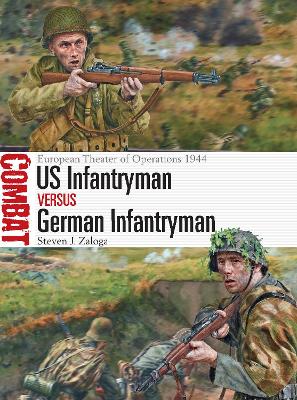Combat
2 total works
The Allied airborne and amphibious landings on D-Day opened up the long-awaited Second Front against Nazi Germany, but after overcoming the German coastal defenses at Utah and "Bloody Omaha," the US Army found itself having to contest every hedgerow and street in a nightmarish battle of attrition. It was the humble infantrymen of both sides who would play a vital role in taking and holding key objectives. Battles across Europe tested both sides to the limit, from the close-quarters warfare around Cherbourg in June 1944 to the struggle for the Scharnhorst Line in October and the brutal cold-weather fighting in the Ardennes that December. Featuring full-color artwork, specially drawn maps, and archive photographs, this study offers key insights into the tactics, leadership, and combat performance of the US and German infantrymen pitched into three pivotal actions at the height of World War II.
During World War II, the two pre-eminent mechanized infantry forces of the conflict, the German Panzergrenadier arm and the US Army's armoured infantrymen, clashed in France and Belgium after the Normandy landings. These engagements went on to profoundly influence the use of mechanized infantry in the post-war world. Drawing upon a variety of sources, this book focuses on three key encounters between July and December 1944 including during Operation Cobra and the Battle of the Bulge, and examines the origins, equipment, doctrine and combat record of both forces.
With specially commissioned full-colour artwork and maps, this study sheds light on the evolving nature of mechanized warfare at the height of World War II.
With specially commissioned full-colour artwork and maps, this study sheds light on the evolving nature of mechanized warfare at the height of World War II.

